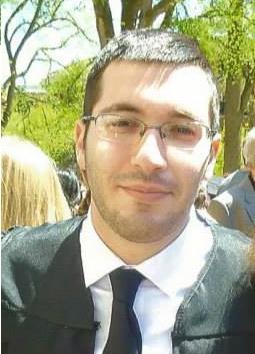 PracticeSpace brings together entrepreneurs, creatives and the local community to shape a business, its space and its story. It is a platform for gathering and energizing the rebuilders of Detroit, and connects local entrepreneurs with a team to cultivate emerging businesses and grow a new community of practitioners.
PracticeSpace brings together entrepreneurs, creatives and the local community to shape a business, its space and its story. It is a platform for gathering and energizing the rebuilders of Detroit, and connects local entrepreneurs with a team to cultivate emerging businesses and grow a new community of practitioners.
W&C Architect interviewed the company’s resident, Josh Lipnik.
W&C Architect: How many years do you have in the profession?
Lipnik: I am currently in the midst of my first year in the profession.
W&C Architect: What is your work history in this field?
Lipnik: For the past three years, I worked as an intern at a landscape architecture firm in Ann Arbor. I am currently in my first year at PracticeSpace, a multidisciplinary design studio in Detroit, where I am the architect-in-residence. Every four months, we take on a new business that is attempting to open a business in Detroit, and take them through the process from business planning and branding to architectural design.
W&C Architect: Where did you go to school?
Lipnik: I attended the Taubman College of Architecture + Urban Planning at the University of Michigan.
W&C Architect: Did you have a specialization?
Lipnik: No, I studied a general architecture curriculum.
W&C Architect: Do you approach architecture from an artistic or functional starting point? Are the two concepts exclusive?
Lipnik: I believe that to create truly great architecture, there must be a harmonious, balanced relationship between art and function. Without beauty, functionality becomes sterile and inhospitable, and without function, beauty becomes useless.
W&C Architect: If any, who are your role models?
Lipnik: I find inspiration from artists that are able to approach their work from a place of honesty and authenticity, whose specificity to their time, place and context allows for a deeper understanding of the general issues that affect us all. Because of the myriad external forces that influence architecture, it is more common to find this type of work from other artistic fields. There are some architects, such as Steven Holl, Peter Zumthor, or Tadao Ando, that come close to achieving this ideal.
W&C Architect: What projects, other than your own work, do you find inspiring?
Lipnik: Last summer I had the chance to tour the work of Le Corbusier throughout France and Switzerland. Although Corbusier’s work remains controversial and contentious amongst architects, the power of his architecture is undeniable when you are experiencing the space directly. In particular, Notre Dame du Haut in Ronchamp, France is an inspiring example of how the play of light and form can create a phenomenological experience for a building’s patron that goes much deeper than our typical understanding of space.
W&C Architect: How many buildings have you designed?
Lipnik: I have not yet designed a complete, new building. I am taking a non-traditional approach to architecture, looking at the profession from a more entrepreneurial standpoint. Working at PracticeSpace has been very supportive of this approach, allowing me to complement my design work at the firm with small projects of my own allowed me to build a unique portfolio. With my firm, I am working on the renovation of a vacant house and storefront in Detroit, and on my own I have taken on a number of furniture and small landscape projects.
W&C Architect: If you had to choose one to represent your work, what project would you choose?
Lipnik: Although it’s a small project, a privacy fence that I designed for a single-family house represents the formal and material experimentation that I strive for in my work.
W&C Architect: What are your guiding principles when designing a structure?
Lipnik: When designing a structure, there are three factors that play into the design process: program, context and material. First, the architect must understand and account for the context the building will be placed in and the way that the building will be used. Only then can you begin to synthesize a material and formal palette that can exist around these contextual and programmatic features.
W&C Architect: If you could have any building to redesign—anywhere in the world—which would you like to address?
Lipnik: If I could redesign any building in the world, it would be the house I grew up in. It’s an incredibly typical suburban tract house in Farmington Hills, MI, but I know it better than any other building in the world. I think it would be an interesting chance not only to redesign my family’s home, but to re-imagine my personal history.
W&C Architect: What types of products interest you?
Lipnik: There isn’t a specific material that I find myself drawn to, but rather products that challenge the preconceived way we view or use a certain material.
W&C Architect: What types of products in the wall and ceiling industry really interest you?
Lipnik: I am interested in finding innovative ways to use banal materials such as gypsum, drywall or plywood to create beautiful, unique spaces, as opposed to the pedestrian uses they are generally associated with.




Report Abusive Comment